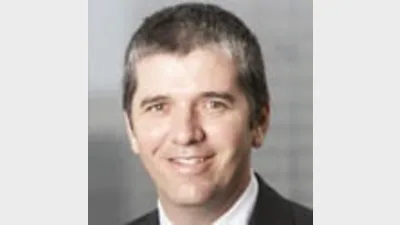Gearing in super is risky business



Self-managed superannuation fund (SMSF) trustees considering using the new borrowing rules to acquire large illiquid assets, such as direct property, may wish to stop and consider the risks that strategy could pose to their fund should a member die or become disabled.
Where a trustee wishes to borrow, it will generally need to demonstrate that the fund is able to generate sufficient income to service the loan on an ongoing basis. However, in certain situations, the unexpected death or total and permanent disability (TPD) of a member could reduce a fund’s cash flow and impact its ability to service a loan.
For example, where a member dies or becomes totally and permanently disabled, the trustees of the fund may be forced to sell assets to pay a death or disability benefit to a member or their beneficiaries. As a result, the fund may be left with insufficient assets to generate the required level of income to service a loan (or satisfy the terms of a loan contract) on an ongoing basis.
In this situation, a lender could potentially require early repayment of the loan (in part or in full), which could require the trustees to sell the asset purchased with the loan.
Being forced to sell an asset could have a number of impacts on a fund, such as:
- reduced investment returns due to being forced to sell an asset at the wrong time in the economic cycle;
- increased costs; and
- increased tax liabilities due to being forced to sell an asset while still in accumulation phase.
To manage these risks, a trustee could consider taking out separate life and TPD insurances over each member of the fund to allow a loan to be repaid in the event of the death or disability of a member.
For example, where a two-member fund has taken out a $200,000 loan to purchase a direct property, the trustees could take out a life and TPD policy for $200,000 over each member to allow the fund to repay the loan in the event of the death or disability of either member.
However, to achieve this objective the trustees will need to review their fund’s trust deed for a number of issues.
These issues are outlined below.
Ability of trustee to acquire policies of insurance
Prior to acquiring any insurance policies, the trustees will need to confirm that the fund’s trust deed permits the trustees to acquire insurance policies on behalf of the fund, and to pay the cost of the premiums from the fund.
Where the trust deed is silent, or prohibits the trustees from obtaining insurance policies, the trustees will need to arrange for the trust deed to be amended accordingly.
Review death benefit provisions
The trustees will also need to review their trust deed’s death benefit provisions to determine whether the proceeds of an insurance policy can be retained in a reserve or whether they must be included in the calculation of a member’s death or TPD benefit.
Where insurance proceeds can be retained in a reserve, they will not form part of a member’s benefits (as reserves are surplus to a fund’s liabilities) and will not need to be paid out as part of a death benefit lump sum. Those reserves can then be used for other purposes, such as to extinguish a loan.
Review reserving rules
To ensure a fund is able to allocate insurance proceeds to a reserve, the trustees will need to review their fund’s trust deed to ensure the fund is permitted to establish and maintain reserves. Where the trust deed is silent or prohibits the fund from maintaining reserves, the trustees will need to arrange for the trust deed to be amended accordingly.
Where a reserve is to be established due to the subsequent death or TPD of a member, the trustees will then need to develop and implement both an investment strategy for the reserve as well as a reserving policy.
The reserving policy should outline what the reserve can be used for and how much of the fund’s investment returns should be credited to the reserve.
Accounting for reserves
It is important to note that trustees will generally not need to create a separate asset pool for a reserve. Instead, the trustees can use an un-segregated approach and hold all fund assets together in one pool and derive the value of the various member and reserve accounts by taking into consideration member contributions and withdrawals, as well as fund investment return and reserve crediting rates.
In this situation, where the trustees use the cash insurance proceeds held in a reserve to repay a loan, the value of the reserve will remain unchanged for accounting purposes. That is, the trustees will simply have used an asset to extinguish a liability of equivalent value.
As a result, the trustees will still be left with the same amount in the reserve after paying out the loan. In this case, the remaining trustees can continue to maintain that reserve or allocate it back to the remaining members of the fund to form part of their benefit.
Allocation of reserves
Where trustees wish to allocate an amount in a reserve back to fund member accounts, they will need to be aware that any allocations from a reserve will count towards the member’s concessional contribution cap unless the allocations:
- are made in a fair and reasonable manner to all members of a fund; or
- do not cause each member’s benefit to increase by more than 5 per cent in a financial year.
For example, where a trustee allocated the full amount in a reserve in a way that was not proportional to each member’s benefit, or which caused the members’ benefits to increase by more than 5 per cent in a financial year, the full amount would count towards the member’s concessional contribution cap.
As a result, this could cause a member to incur, or increase, an excess contributions tax liability.
Trustees should therefore take care to ensure any reserve allocations are made in a way that will not cause a member to incur an excess concessional contributions tax liability.
Practicalities
To implement this strategy the trustees will also need to take into account a number of practical issues. These include:
- the total amount and cost of insurance — to manage risk a trustee will generally need to insure each member separately. As a result, the total insured amount could be up to four times the size of the loan.
- the tax treatment of any insurance proceeds — while the proceeds of a life insurance policy received by a super fund are generally treated as capital and not subject to capital gains tax (CGT), there is some uncertainty in relation to the taxation of proceeds received due to a member becoming totally and permanantly disabled. If it is confirmed that CGT does apply to TPD proceeds, trustees will need to gross up the insured amount to take into account CGT.
- the non-tax deductibility of the insurance premiums — as the proceeds of an insurance policy will be used to extinguish a loan and not to pay a death or disability benefit, the premiums will generally not be tax deductible.
Unless trustees take care to consider all the risks associated with borrowing under the new rules, a fund could find itself worse off due to being forced to sell assets purchased with the borrowing as a result of the unexpected death or disability of a member.
Craig Day is senior technical services manager at Colonial First State.
Recommended for you
ASIC has commenced civil penalty proceedings in the Federal Court against superannuation trustee Diversa Trustees, regarding the First Guardian Master Fund.
The winners have been announced for the 2025 Super Fund of the Year Awards, held in Melbourne on 26 November by Money Management's sister brand Super Review.
Data and technology provider Novigi has acquired Iress’ superannuation consulting and managed services business from Apex Group.
AMP is to launch a digital advice service to provide retirement advice to members of its AMP Super Fund, in partnership with Bravura Solutions.










